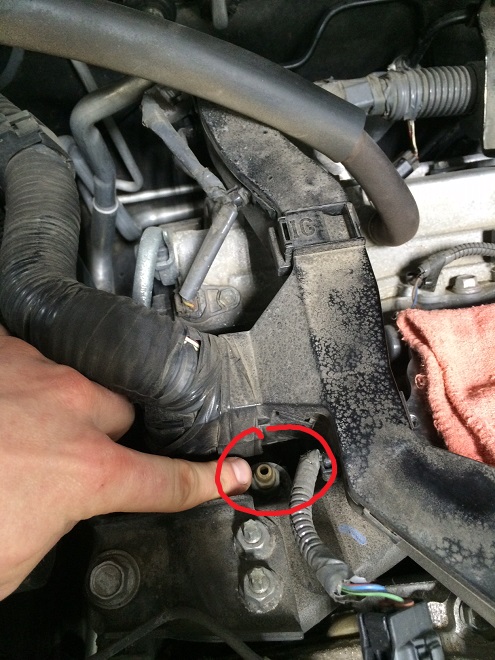To bleed a cooling system with a bleeder valve, open the valve while filling the coolant, and close it once the coolant starts flowing out. This will effectively remove any trapped air in the system.
When it comes to bleeding the cooling system of your vehicle, it is important to ensure that there are no air pockets or bubbles in the system. These air pockets can disrupt the flow of coolant and lead to overheating.
One effective method to remove air from the system is by using a bleeder valve. By following a simple process of opening and closing the valve while filling the coolant, you can effectively remove any trapped air and ensure the proper functioning of your cooling system. This is a crucial maintenance step that can help prevent engine damage and keep your vehicle running smoothly.

Credit: carspecmn.com
Why Bleed Cooling System
Why Bleed Cooling System?
Bleeding the cooling system is an important maintenance task for preventing damage to the engine. By removing any trapped air or airlocks, it ensures that coolant can flow freely, maintaining proper temperature levels throughout the engine. A properly functioning cooling system is essential for the engine’s performance and longevity.
- Trapped air can cause hotspots within the engine, leading to overheating and potential damage.
- Trapped air can disrupt the flow of coolant, preventing it from effectively absorbing and dissipating heat.
- This can result in inconsistent temperature levels and poor engine performance.
- Airlocks can prevent the proper circulation of coolant, leading to cooling system inefficiencies and potential overheating.
- Removing airlocks ensures a continuous flow of coolant, maintaining optimal cooling performance.
Overall, bleeding the cooling system with a bleeder valve is a simple yet crucial maintenance procedure for preserving the engine’s health and performance. By ensuring proper coolant circulation and preventing overheating, it helps extend the lifespan of the engine and optimize its overall performance.
Methods To Bleed Cooling System
The bleeding of a cooling system with a bleeder valve is an important process to ensure that the system is free of air pockets, which can cause overheating and other issues. There are two primary methods that can be used to bleed a cooling system, and one of them involves using a bleeder valve.
When using a bleeder valve, start by filling the radiator with coolant. Then, start your vehicle and let it run until the engine reaches operating temperature. Next, reinstall the radiator cap and close the bleeder valve. It’s important to follow the manufacturer’s instructions for your specific vehicle, as the location of the bleeder valve may vary.
Another method that can be used to bleed a cooling system is by using a funnel. This involves using a funnel with a built-in bleeder valve. Simply attach the funnel to the radiator and fill it with coolant. Then, start the engine and let it run until the air bubbles have escaped and the coolant level stabilizes.
Overall, properly bleeding a cooling system is essential for maintaining the efficiency and longevity of your vehicle’s engine.
Step-by-step Guide To Bleed Cooling System With Bleeder Valve
Looking for a step-by-step guide on how to bleed a cooling system with a bleeder valve? Check out this informative video on YouTube that walks you through the process, from filling the radiator to ensuring the engine reaches operating temperature.
It’s the easiest way to bleed your coolant and get your cooling system back in optimal condition.
While performing a coolant system flush or replacing coolant, it is important to properly bleed the cooling system to ensure optimal performance. Bleeding the cooling system allows for the removal of any air pockets that may have formed during the process, which can cause overheating and potential damage to the engine. Here is a step-by-step guide to bleeding the cooling system with a bleeder valve:Preparation:
|

Credit: www.actonservicecentre.co.uk
Credit: www.rzrforums.net
Frequently Asked Questions For How To Bleed Cooling System With Bleeder Valve
How Do You Bleed Air From A Cooling System With A Bleeder Valve?
To bleed air from a cooling system with a bleeder valve: 1. Fill the heat exchanger while keeping the bleeder valve open. 2. Once coolant starts flowing out of the bleeder valve, close it and continue filling the heat exchanger.
3. This helps remove trapped air from the system.
How Do I Get Air Out Of My Car Cooling System?
To get air out of your car cooling system, follow these steps:1. Fill the radiator with coolant. 2. Start your vehicle. 3. Let the engine reach operating temperature. 4. Reinstall the radiator cap. 5. Repeat if necessary.
How Long Does It Take To Bleed Air Out Of Cooling System?
It typically takes around 5-15 minutes to bleed air out of a cooling system. Start by filling the radiator, then start the vehicle and let the engine reach the operating temperature. Reinstall the radiator cap after ensuring no more air bubbles are escaping.
Will Air Work Itself Out Of Cooling System?
Yes, air will work itself out of the cooling system. The cooling system will purge on its own when the temperature is high, allowing the air bubbles to escape through the radiator cap and overflow tube to the reserve tank.
The air will be pulled back into the system upon cooling.
Conclusion
Make sure to follow these steps to successfully bleed your cooling system using the bleeder valve. Begin by filling the radiator and starting the vehicle, ensuring the engine reaches operating temperature. Then, reinstall the radiator cap and conclude the process.
Bleeding the system is crucial for maintaining proper cooling functionality and preventing issues such as coolant leaks. By following these instructions, you can effectively remove air from your car’s cooling system. Keep your engine running smoothly and maintain optimal performance with this simple process.







